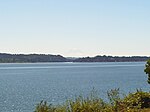Erlands Point-Kitsap Lake, Washington
Census-designated places in Kitsap County, WashingtonCensus-designated places in Washington (state)Use mdy dates from July 2023

Erlands Point-Kitsap Lake is an unincorporated area and former census-designated place (CDP) in Kitsap County, Washington, United States. The population was 2,935 at the 2010 census. For the 2020 census, the area was split into two CDPs, Erlands Point and Kitsap Lake. Based on per capita income, one of the more reliable measures of affluence, Erlands Point-Kitsap Lake ranks 84th of 522 areas in the state of Washington to be ranked.
Excerpt from the Wikipedia article Erlands Point-Kitsap Lake, Washington (License: CC BY-SA 3.0, Authors, Images).Erlands Point-Kitsap Lake, Washington
Chico Way Northwest,
Geographical coordinates (GPS) Address Nearby Places Show on map
Geographical coordinates (GPS)
| Latitude | Longitude |
|---|---|
| N 47.591944444444 ° | E -122.70888888889 ° |
Address
Chico Way Northwest 3093
98312
Washington, United States
Open on Google Maps



